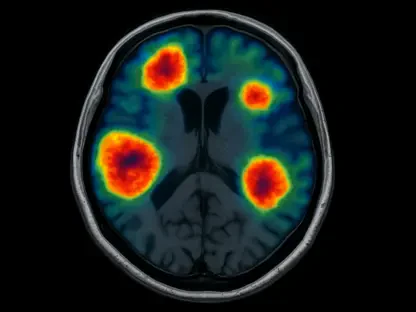The recent resignation of Peter Marks as the head of the FDA’s Center for Biologics Evaluation and Research (CBER) marks a significant moment for the cell and gene therapy industry. His departure has sparked widespread discussion about the future direction of the regulatory landscape and its implications for therapeutic development.
Pioneering Leadership
Tenure and Achievements
Peter Marks’ tenure at CBER, starting in 2016, was characterized by a wave of groundbreaking approvals in the cell and gene therapy space. His leadership saw the approval of the first gene therapy, the first cellular cancer treatment, and the pioneering CRISPR gene-editing medicine.
Marks was instrumental in guiding the FDA through an era of rapid innovation in biotechnology. The approval of these therapies under his leadership underscored a willingness to embrace emerging technologies that held the potential to revolutionize medical treatment. The first gene therapy for a rare form of vision loss in 2017 marked the beginning of a new chapter in medicine, providing a template for subsequent approvals. Notably, his efforts facilitated the development and approval of therapies that targeted extremely rare and life-threatening conditions, areas that previously lacked effective treatments. Marks’ proactive approach was characterized by an understanding of the urgent needs of patients and the transformative potential of these therapies.
Innovative Approaches
Marks’ approach prioritized accelerated review processes and regulatory flexibility, which enabled the swift delivery of advanced therapies to patients. His methods, although sometimes contentious, were driven by a commitment to patient-centered care. By endorsing expedited pathways such as the Breakthrough Therapy designation and Accelerated Approval, Marks actively sought to reduce barriers to market entry for innovative treatments. This stance allowed for earlier access to potentially life-saving therapies for patients with few or no alternatives.
Marks’ commitment to regulatory flexibility often involved making difficult decisions in the context of limited clinical data. While this approach aimed to address unmet medical needs quickly, it was not without controversy. Critics expressed concern that such flexibility might undercut the rigorous standards required to ensure patient safety and therapeutic efficacy. Nonetheless, Marks maintained that the potential benefits of early access to these therapies justified the risks, a perspective that resonated with patient advocacy groups and many in the biotech industry.
Industry Repercussions
Uncertainty and Challenges
His resignation introduces a period of uncertainty within the industry, which is already navigating investment difficulties. Marks was seen as a major advocate, and his absence raises concerns about future regulatory support and direction. The impact of this transition on the regulatory landscape is significant, prompting questions about the FDA’s future stance on accelerated approval pathways and its overall regulatory approach to emerging therapies.
In the wake of Marks’ departure, stakeholders are grappling with uncertainty. Industry leaders and biotech firms, who relied on his support for navigating complex regulatory hurdles, now face a potential shift in the FDA’s approach to therapeutic evaluation and approval. This uncertainty is compounded by broader industry challenges, including funding constraints and market volatility. Marks’ leadership had provided a sense of stability and predictability, which is now disrupted by his resignation, making it more difficult for developers to plan and secure investments confidently.
Financial Implications
The departure has had immediate financial consequences, with declining stock prices for several gene therapy companies. Investors are wary of the potential for a more stringent regulatory environment moving forward. The market’s reaction reflects concerns about the future trajectory of FDA policy under new leadership. Significant investments had been made based on the regulatory frameworks and supportive environment cultivated by Marks, and the prospect of a shift in policy direction introduced a level of financial risk to these ventures.
Analysts highlight that the instability could hinder the flow of investment into innovative research and development, which is vital for the continued advancement of cell and gene therapies. Companies may face higher costs and longer timelines to navigate a more stringent regulatory process, affecting their financial viability and capacity to bring new treatments to market expeditiously. This financial uncertainty underscores the broader impact of Marks’ resignation on the cell and gene therapy industry, extending beyond regulatory concerns to encompass economic stability and growth.
Balancing Safety and Progress
Risk Management
Marks was known for his willingness to make tough decisions that balanced the urgency of treatment access with comprehensive evaluation. His approval of Sarepta Therapeutics’ Elevidys gene therapy, despite mixed clinical data, exemplifies this approach. Marks argued that even a minor benefit, particularly in cases of severe or progressive conditions, was meaningful and warranted expedited patient access. This philosophy highlighted his belief in the potential for incremental advances to significantly improve patient outcomes.
The decision surrounding Elevidys was emblematic of Marks’ broader regulatory philosophy. While not universally lauded, his willingness to weigh the potential benefits of early access against the risks of incomplete data reflected his commitment to patients’ immediate needs. This balance was not easy to maintain and attracted both praise and criticism, illustrating the inherent complexity and ethical dilemmas in regulatory decision-making. By prioritizing patient access to promising treatments, Marks positioned the FDA as a proactive agent in addressing urgent medical needs.
Criticism and Praise
While patient advocacy groups praised Marks for his dedication and compassion, some critics argued that his flexible standards might have compromised safety and efficacy benchmarks. This ongoing debate highlights the complexities of the regulatory process. Patient organizations often lauded Marks for understanding the dire needs of those affected by rare diseases, emphasizing his compassionate approach to therapy approval.
Conversely, some healthcare professionals and regulatory experts raised concerns about the potential long-term implications of reducing clinical trial rigors. They argued that such practices might lead to unforeseen safety issues or diminished therapeutic effectiveness, potentially eroding public trust in new treatments. The tension between timely access and rigorous evaluation remains a fundamental challenge in the regulation of advanced therapies, underscoring the need for careful, balanced approaches that neither hinder innovation nor compromise patient safety.
A Legacy of Regulatory Evolution
Building Frameworks
Marks played a crucial role in developing tailored regulatory frameworks and manufacturing processes to suit the unique needs of cell and gene therapy. His efforts led to the approval of 42 therapies since 2017, showcasing his impact. The establishment of these frameworks addressed the inherent complexities of cell and gene therapies, which often involve precise genetic modifications and novel manufacturing techniques. Marks’ initiatives aimed to ensure that regulatory science kept pace with technological advancements, facilitating smoother pathways for innovation.
His work included modernizing the regulatory infrastructure to accommodate the surge in therapeutic applications and foster a supportive environment for scientific development. Through strategic planning and the implementation of specialized procedures, Marks helped create a robust, adaptable regulatory backdrop capable of handling the intricacies of these advanced treatments. This progress translated directly into the growing number of approved therapies, highlighting the importance of dedicated regulatory frameworks in facilitating medical breakthroughs.
Expanding Expertise
Recognizing the need for specialized knowledge, Marks worked to expand CBER’s team and modernize its regulatory framework. These moves aimed to keep pace with the surging number of therapy applications and scientific advancements. By recruiting experts from diverse fields, Marks strengthened the FDA’s capacity to evaluate complex scientific data and make informed decisions. This expansion of expertise was pivotal in addressing the multifaceted nature of cell and gene therapy, which often demands interdisciplinary knowledge and innovative regulatory strategies.
Under Marks’ leadership, efforts to enhance regulatory capabilities also included the incorporation of advanced technologies and methodologies to streamline the evaluation process. These initiatives were designed to ensure that the FDA could efficiently and effectively manage the growing workload associated with the rapid influx of new therapeutic applications. By fostering a culture of learning and adaptability within CBER, Marks equipped the agency to better handle the demands of the evolving biotech landscape, striving to balance the need for scientific rigor with the urgency of patient access.
Future Prospects
Leadership Transition
The industry is keenly watching for Marks’ successor, whose approach will significantly influence the regulatory landscape. The potential for further staff departures adds to the unpredictability of the transition period. Transitioning to new leadership brings inherent challenges, particularly in maintaining the continuity of established regulatory practices while potentially introducing new perspectives and priorities.
The selection of a new leader will be crucial in determining the FDA’s future direction in cell and gene therapy regulation. Industry stakeholders are concerned about maintaining the momentum generated during Marks’ tenure while adapting to the evolving landscape of medical innovation. The potential for further changes within the agency, including additional staff turnover, compounds the uncertainty and stresses the need for clear and consistent leadership to navigate this critical period. The impact of new leadership on existing regulatory frameworks and policies remains a focal point for both industry players and patient groups.
Continued Advocacy
Despite Marks’ departure, there is optimism that his patient-focused regulatory philosophy will endure. Many current FDA reviewers and leaders, like Nicole Verdun, share his commitment to expedited treatment access. Verdun and others who worked closely with Marks are seen as carrying forward his legacy, ensuring that the core principles of patient-centered care and regulatory flexibility remain central to the FDA’s mission.
There is hope within the industry that Marks’ impact on regulatory culture will continue to influence the agency’s approach, fostering an environment that prioritizes patient needs without compromising safety. The sustained advocacy for accelerated approvals and innovative regulatory strategies reflects a broader commitment to balancing timely access to groundbreaking therapies with the rigorous evaluation needed to protect patients. This continued support is seen as critical for maintaining the progress achieved under Marks’ leadership and ensuring that the FDA remains responsive to the dynamic advancements in cell and gene therapy.
Navigating Uncertainty
Industry Concerns
Cell and gene therapy developers face a formidable landscape without Marks’ guidance. Companies developing therapies for conditions like Duchenne muscular dystrophy may encounter stricter scrutiny under new leadership. The uncertainty about potential shifts in the regulatory approach poses significant challenges, as developers must adapt to possibly more rigorous requirements for clinical data and trial design. These changes could lead to longer approval timelines and increased costs, impacting the pace of innovation and patient access to new treatments.
Without the support of a strong advocate like Marks, companies fear that the focus on expedited pathways might diminish, leading to a potentially more conservative and cautious FDA stance. Such a shift would necessitate adjustments in strategic planning and resource allocation across the industry. The concerns extend to broader operational dynamics, where developers must remain agile and responsive to the evolving regulatory environment while continuing to push the boundaries of scientific advancement.
Staffing and Operational Challenges
The recent resignation of Peter Marks as the head of the FDA’s Center for Biologics Evaluation and Research (CBER) signals a noteworthy shift for the cell and gene therapy sector. His departure has ignited considerable discourse regarding the future trajectory of regulatory policies and their ramifications for the development of innovative treatments. Marks, known for his pivotal role in advancing the FDA’s oversight in biotechnology, leaves behind a legacy that will undoubtedly influence ongoing and future therapeutic endeavors. As stakeholders within the industry ponder over his successor, there’s a palpable sense of anticipation about how upcoming leadership may either sustain or alter the current regulatory framework. The impact of this shift will be closely monitored by pharmaceutical companies, researchers, and investors, all vested in the progress and success of cell and gene therapies. The transition might bring about new challenges or opportunities that could directly affect how rapidly these life-altering therapies reach the market and benefit patients.









